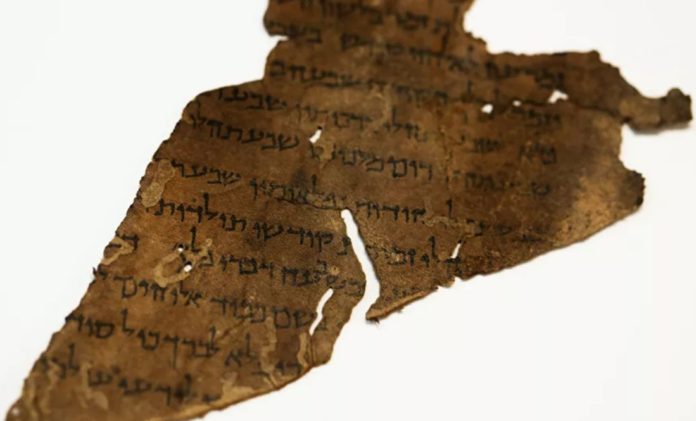More than 70 years ago a Bedouin shepherd lost a goat in the Qumran desert by the Dead Sea. Looking for it, he went into a cave that was difficult to access, located on the wall of a mountain, and there he found several vessels containing parchments, the so-called Dead Sea Scrolls.
There began an odyssey that dispersed the referred documents by different countries, although most of them remained in the hands of the local Jordanian authorities until Israel occupied East Jerusalem in the 1967 war and appropriated them.
The Dead Sea Scrolls contain numerous scrolls that over time have been dismembered into some 25,000 fragments, some tiny. Some, however, remain whole and have been read, but innumerable fragments remain separate without scholars being able to put them together to complete them as they were hidden in the caves of the area by the Essenes, a peculiar sect of Judaism that flourished two millennia ago, coinciding with the emergence of Christianity.
Many answers, more questions
Although the Dead Sea manuscripts answer some of the questions that scholars ask themselves, the number of questions they raise is not less. To answer them, it would be necessary to recompose the 25,000 fragments in the 930 different manuscripts that experts estimate existed in their day, a gigantic task that scholars have not been able to complete after seven decades of study. To complicate matters, an unknown number of small fragments are known to have been lost forever over the years.
Last week the magazine Cell published an article in which it was revealed that a team of scientists from various countries has applied the most advanced tools in biology to investigate the fragments and solve the mysteries they pose. Professors from Israel, Sweden and the United States have participated in the research.
Those scholars have applied sophisticated computational methods to establish the DNA sequence of the animals’ skin where the fragments were written, and have thus been able to catalog fragments belonging to 26 manuscripts. The method is simple and consists of putting together the fragments that have the same DNA sequence.
“There are numerous fragments of scrolls that we don’t know how to connect to each other, and if we connect wrong pieces, the interpretation of the scrolls can change dramatically,” Professor Oded Rechavi, from the Sagol School of Neuroscience in Tel Aviv, told the Haaretz newspaper. “Assuming that the fragments that come from the same sheep belong to the same scroll allows us to put the puzzle pieces together.”
The researchers began by collecting samples of the fragments. In most cases, to avoid harming the fragments, they extracted DNA from the fragments’ naturally occurring ‘dust’. “We were not allowed to touch the scrolls,” explained Dr. Sarit Anava, from the same School of Neuroscience, who was in charge of taking the “dust” from the scrolls to a genetic laboratory in Upsala, Sweden, for analysis.
The oldest manuscripts
The idea of carrying out this type of DNA analysis has been circulating for many years in the academic media, but until now the definitive step has not been taken. All the scientists and professors agree that it has been a great success that will allow the study of the Dead Sea Scrolls to advance in a dizzying way in the coming years.
The Dead Sea Scrolls contain texts from the 1st century BC to the 1st century AD. In some cases, they are fragments of books of the Bible, and therefore they are the oldest available manuscripts of the Bible. Other manuscripts have to do with the Essene community, or there are even those related to authors of the time who did not belong to the Essene community.
The Scrolls allow scholars to form a rough idea of what a faction of Judaism was like that disappeared shortly after, although it could leave a mark on the incipient Christian communities.
